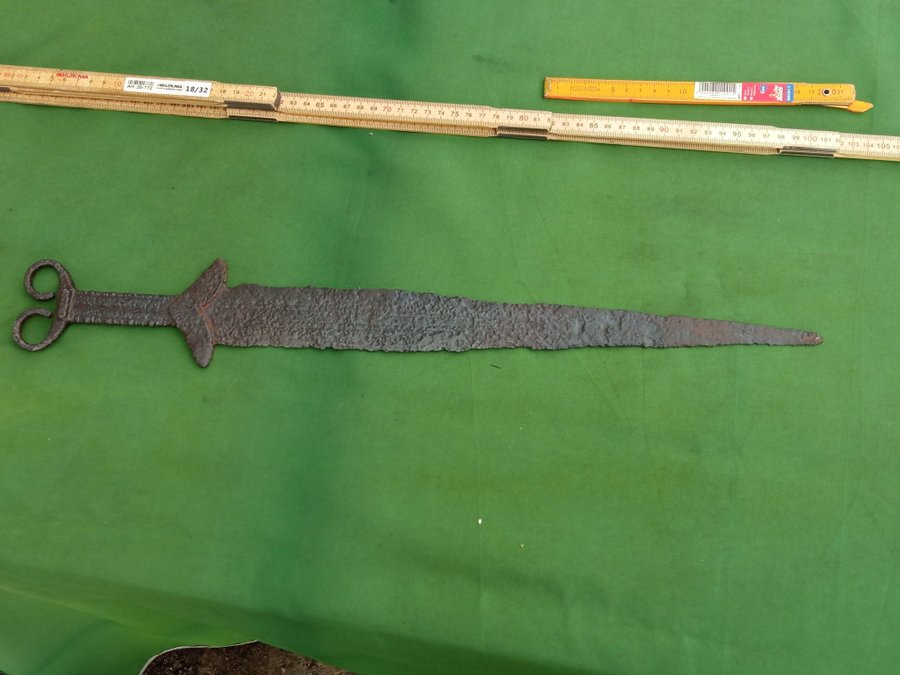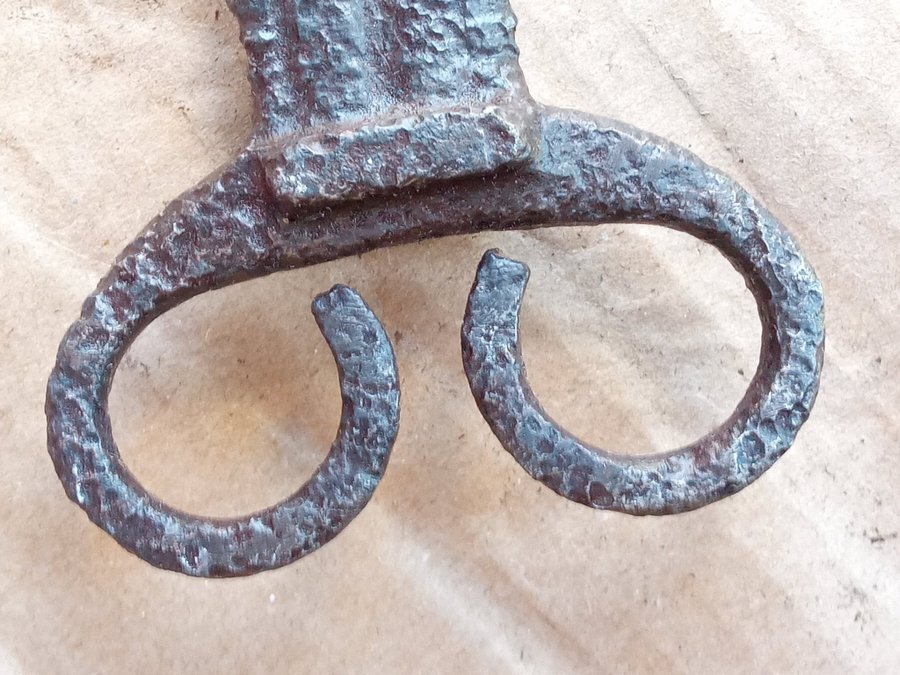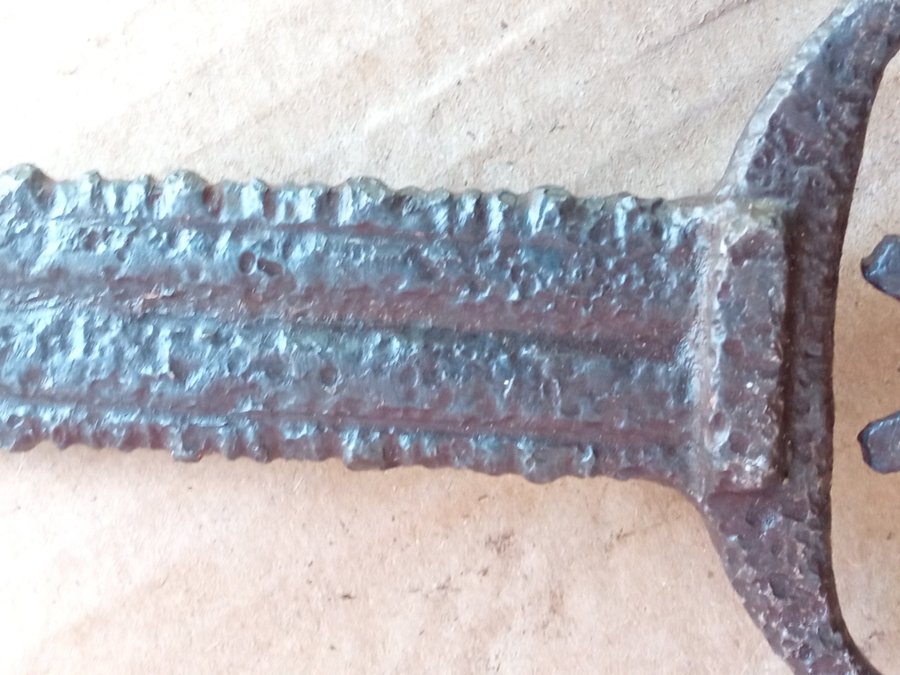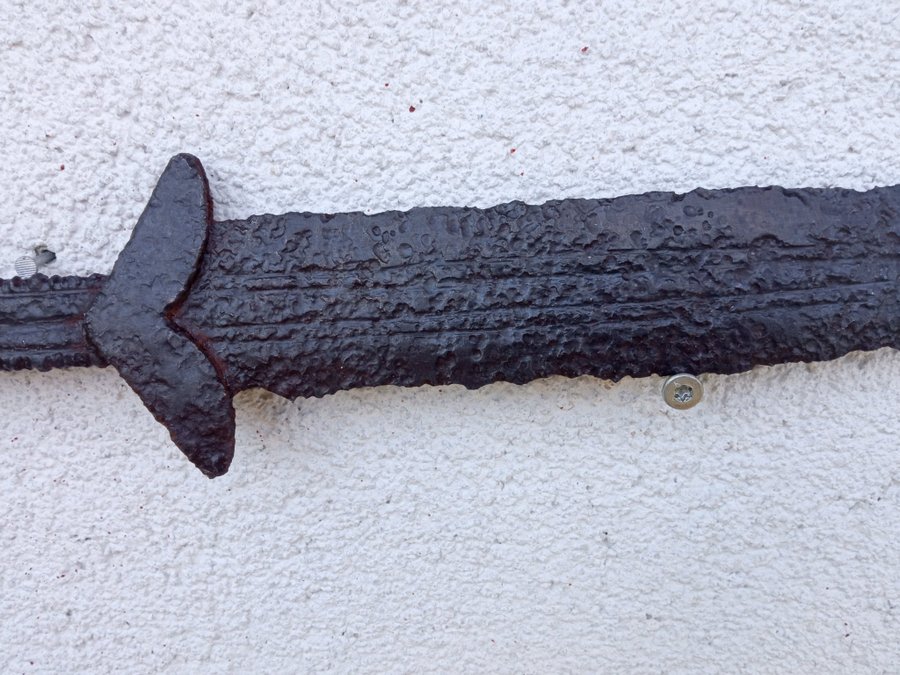




Akinak short ritual sword
Details
Description from the seller
Akinak short ritual sword
The beginning of the relatively generally accepted history of the Scythians and Scythians - VIII century BC. e., the return of the main forces of the Scythians in the Northern Black Sea region, where until this the Cimmerians ruled for centuries. The Cimmerians were driven out by the Scythians from the Northern Black Sea region by the VII century BC. e. in Asia Minor. In the 70s of the VII century BC. e. Scythians invaded Media, Syria, Palestine and, according to the characteristics of Herodotus, "dominated" in Western Asia, where they created the Scythian Kingdom - Ishkuz, but by the beginning of the 6th century BC. e. were forced out of there. Traces of the stay of the Scythians were also noted in the North Caucasus.
Close relations with slave-owning cities of the Northern Black Sea region, intensive trade of Scythians with cattle, bread, furs and slaves strengthened the process of class formation in Scythian society. It is known about the existence of a union of tribes among the Scythians, which gradually acquired the features of a peculiar state of an early slave type headed by the king. The power of the king was hereditary and deified. She confined herself to the Allied Council and the People’s Assembly. There was a selection of military aristocracy, warriors and priestly layer. The political consolidation of the Scythians contributed to their war with the Persian king Darius I in 512 BC. e. - at the head of the Scythians were three kings: Idanfirs, Skopas and Taksakis. At the turn of the 5th — 4th centuries BC. e. Scythians intensified on the southwestern borders of Scythia. Expansion into Thrace intensified during the reign of King Ateeus, probably uniting Scythia under his command. This caused a war with Macedonian king Philip II. However, Justin did not report that Philip crossed the Danube during the march to Athea, but said that Philip sent ambassadors ahead so that they would tell Athei that he was heading towards the mouth of Istra (modern Danube) to erect a statue of Hercules . Based on these reports, the question of what territories Atey owned was controversial.
In 339 BC. e. King Atey died in the war with the Macedonian king Philip II. In 331 BC. e. Zopirion, the vicar of Alexander the Great in Thrace, invaded the Western possessions of the Scythians, besieged Olbia, but the Scythians destroyed his army:
“Zopirion, left by Alexander the Great as the governor of Pontus, believing that he was considered lazy if he didn’t commit any enterprise, gathered 30 thousand troops and went to war with the Scythians, but was destroyed with the whole army ... ”
An archaeological study of the Kamensky settlement in the Zaporizhia region of Ukraine (about 1,200 hectares) showed that it was the administrative and commercial and economic center of the steppe Scythians in the heyday of the Scythian kingdom. Drastic changes in the social order of the Scythians to the 4th century. BC e. were reflected in the appearance in the Dnieper of the grand burial mounds of the Scythian aristocracy, the so-called. “Royal kurgans”, which reached a height of more than 20 m. The kings and their warriors were buried in them in deep and complex burial structures. The burials of aristocracy were accompanied by the burial of moribund wives or concubines, servants (slaves) and horses.
Warriors were buried with weapons: short akinaki swords with gold sheaths, a mass of arrows with bronze tips, quivers or burns overlaid with gold plates, spears and darts with iron tips. Copper, gold and silver dishes, Greek painted ceramics and amphoras with wine, various decorations, often fine jewelry made by Scythian and Greek masters, were often found in rich graves. During the funeral of ordinary Scythian congregations, the same rite was performed mostly, but the funeral inventory was poorer.


